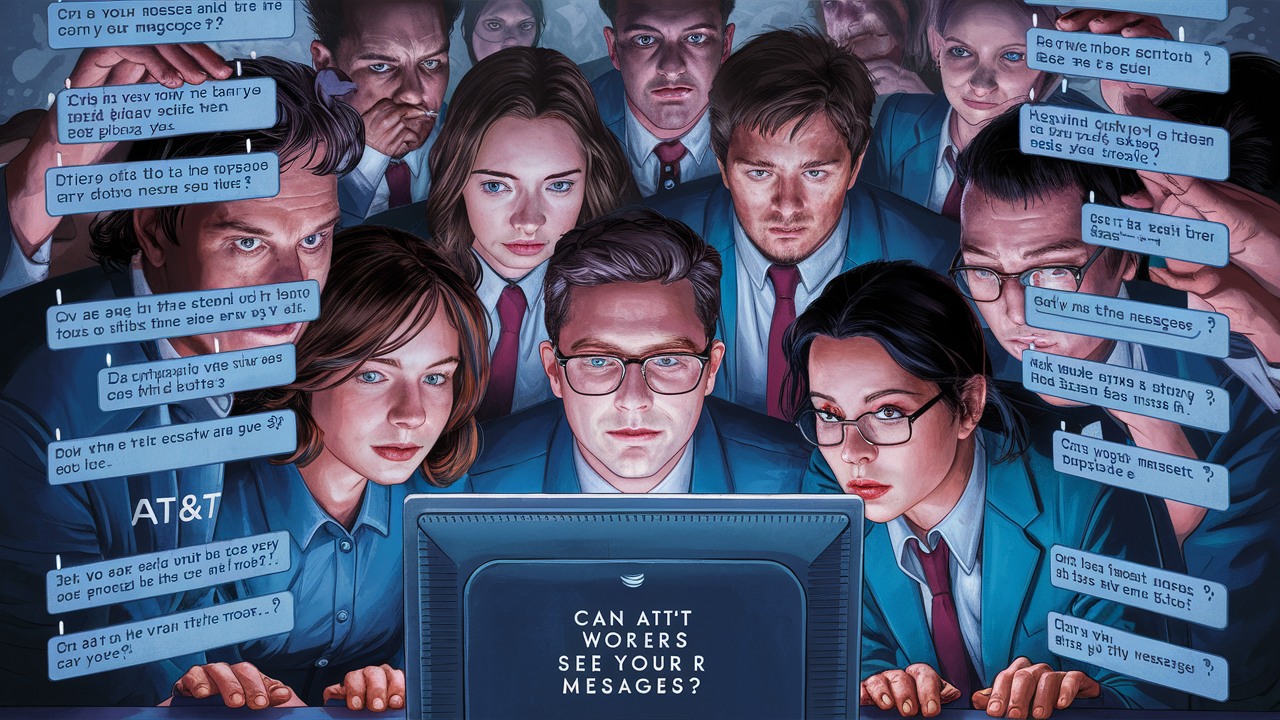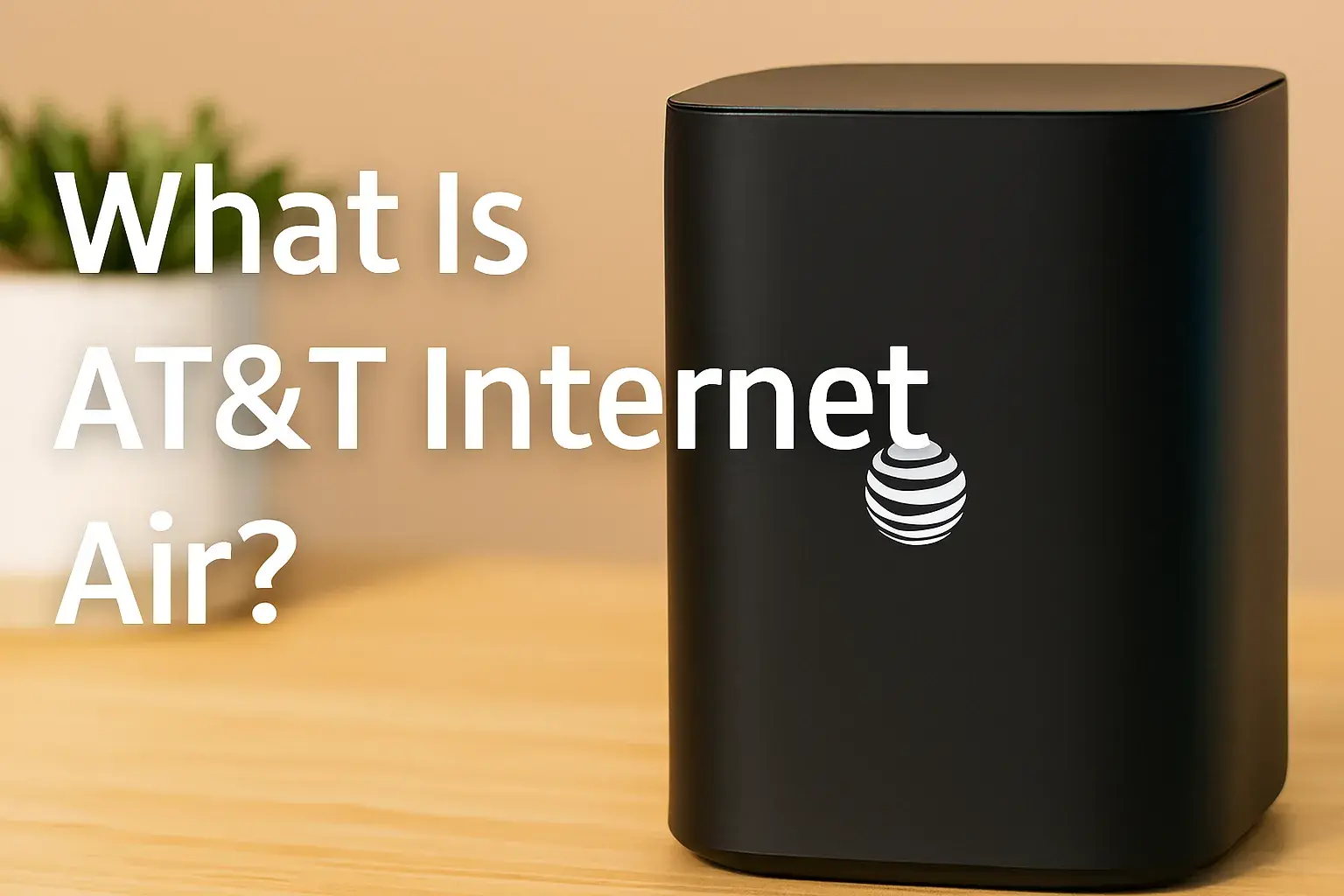Can AT&T workers see your messages?

You’re about to send a private text message. Maybe it’s a sensitive financial detail, a personal confession, or a photo meant for one person. Suddenly, a thought crosses your mind: "Who else can see this?"
It’s a common and valid concern in our hyper-connected world. As one of the largest telecommunications providers in the United States, AT&T Internet is the gateway for millions of our daily communications. It’s only natural to wonder about the people behind the curtain. Can AT&T workers see your messages?
The short answer is more nuanced than a simple yes or no. While the average AT&T employee cannot casually browse your text conversations, certain circumstances and technical realities dictate what is visible and to whom. Your privacy is protected by a combination of company policy, federal law, and—most importantly—the technology you choose to use.
In this comprehensive guide, we’ll cut through the confusion. We’ll explain exactly how AT&T handles your messages, the legal and technical safeguards in place, and the practical steps you can take to lock down your privacy. By the end, you’ll have a clear, authoritative understanding of your digital rights and how to protect them.
How AT&T Messaging Works: A Technical Breakdown
To understand privacy, we first need to understand the process. When you hit "send," your message embarks on a short but complex journey.
The Path of a Standard SMS/MMS
When you send a traditional text (SMS) or picture message (MMS), it doesn't travel directly to your recipient's phone. Instead, it goes through AT&T’s network infrastructure.
-
Initiation: You send a message from your device.
-
Transmission: Your phone sends the message to the nearest AT&T cell tower.
-
Routing: The message travels to AT&T’s core network and is routed to the intended recipient, whether they are on AT&T, Verizon, T-Mobile, or another carrier.
-
Delivery: The recipient’s carrier delivers the message to their device.
During this process, AT&T acts as a digital postmaster. It needs to know the "address" (the phone number) and ensure delivery, but it doesn’t necessarily need to read the "letter" inside the envelope to do its job.
The Game-Changer: End-to-End Encrypted Messaging
This is where services like iMessage (Apple), WhatsApp, and Signal differ dramatically. They use a security protocol called end-to-end encryption (E2EE).
-
Encryption: Your message is scrambled into unreadable code on your device before it leaves your phone.
-
Secure Transit: This encrypted data passes through servers (like Apple’s for iMessage), but because they don’t hold the decryption key, the service provider cannot read it.
-
Decryption: The message is only decrypted back into readable text when it reaches your recipient’s device.
Think of it like sending a locked safe. AT&T (or Apple) can carry the safe, but they don’t have the key to open it. Only the intended recipient does. This fundamental difference is the single most important factor in message privacy.
Can AT&T Workers Actually See Your Messages? The Direct Answer
Let’s address the core question head-on. The accessibility of your messages depends heavily on the type of message and the context.
The Official AT&T Privacy Policy Stance
AT&T’s privacy policy is public and clear. The company states that it collects and uses customer data to provide services, for billing, and for network security. However, it emphasizes that access to customer information by employees is strictly controlled and limited to those with a legitimate business need.
In practice, this means a customer service representative helping you with a billing issue does not have a button they can press to pull up the content of your text messages. Such access is not part of their standard tools or authorized workflow.
The Legal and Internal Firewalls
Employee access is restricted by:
-
Internal Audits: AT&T logs employee access to sensitive customer data. An employee pulling up your message content without a valid reason would likely trigger alerts and result in severe consequences, including termination.
-
Training and Compliance: Employees undergo rigorous training on data privacy and are legally bound by confidentiality agreements.
-
Technical Permissions: Access to message content is not broadly available. It is typically restricted to highly specialized security and legal teams, and even then, only under specific conditions.
Real-World Scenarios: SMS/MMS vs. E2EE
This is the critical distinction:
-
Standard SMS/MMS: Technically, the content of these messages is not encrypted on AT&T’s network. While it is highly unlikely that any employee would or could access them casually, the technical capability exists at an institutional level, primarily for lawful intercept purposes. They are the least private option.
-
iMessage/RCS/WhatsApp/Signal: If you use an end-to-end encrypted app, the content is unreadable to AT&T. Even if a court order compelled AT&T to provide message content, it would only be able to hand over undecipherable encrypted data. The company and its employees cannot see what you write.
When AT&T Employees Might Access Data (And Why)
While casual snooping is forbidden and impractical, there are legally sanctioned scenarios where access to certain data occurs.
Law Enforcement Requests and Court Orders
This is the most common reason for access. Under laws like the Communications Assistance for Law Enforcement Act (CALEA), carriers like AT&T are required to assist law enforcement when presented with a valid warrant, subpoena, or court order. This doesn’t mean handing over a database of all your messages. It is a targeted process for specific investigations.
Fraud Prevention and Security Monitoring
To protect you and their network, AT&T continuously monitors for fraudulent activity. For example, if your number suddenly starts sending thousands of texts, a security algorithm might flag it. An employee in the security department might then investigate the metadata—who you were texting and when—to confirm fraud, but they are unlikely to need the content itself to take action.
Account Troubleshooting: Metadata vs. Content
When you call customer support because your messages aren't sending, the representative can see metadata.
-
What they can see: The phone numbers you've contacted, the time and date of attempts, and whether the message was delivered.
-
What they (typically) cannot see: The actual text or photo you sent.
This metadata is often sufficient to diagnose network or delivery issues without invading the privacy of the message content.
What Data AT&T Can See (and What They Can’t)
Let's create a clear inventory of what is visible and what is protected.
Message Metadata: The "Envelope" Information
This is the data AT&T needs to function and retain for a period of time. It can be very revealing on its own.
-
Sender and Receiver Phone Numbers
-
Date and Time Stamp of the message
-
Message Length (for SMS)
-
Approximate Location Data (based on which cell tower handled the message)
Content Visibility: The Power of Encryption
-
Standard SMS/MMS Content: Technically visible at the network level but protected by policy and access controls.
-
iMessage/WhatsApp/Signal Content: Not visible. Encrypted from device to device.
App-by-App Visibility Breakdown
-
SMS/MMS (Android or iPhone): Highest visibility to the carrier.
-
iMessage (Blue Bubbles on iPhone): Content is E2EE. AT&T sees only encrypted data packets, much like internet service traffic.
-
RCS (Chat Features on Android): If E2EE is enabled (as it is in many modern implementations like Google Messages), the content is protected. Standard RCS may not be E2EE by default when crossing carriers.
-
WhatsApp, Signal, Telegram (Secret Chats): Content is E2EE. The carrier only sees that you are using data; the message content is secure.
Your Privacy Rights as an AT&T Customer
You are not powerless. Several laws and policies give you control over your data.
The U.S. Communications Privacy Act
This federal law makes it a crime to intentionally intercept electronic communications. It provides a baseline legal protection for the privacy of your messages.
Your Rights Under CCPA and GDPR
-
CCPA (California Consumer Privacy Act): Grants California residents the right to know what personal information AT&T collects, to delete it, and to opt out of its sale.
-
GDPR (General Data Protection Regulation): For customers in the European Union, GDPR provides even stronger rights, including data portability and the "right to be forgotten."
Even if you don’t live in these regions, AT&T often extends similar rights to all US customers as a best practice.
How to Request or Delete Your Data
You can contact AT&T’s Privacy Policy team to formally request a report on the data they hold about you. This report will typically detail your metadata history but not the content of messages, which they do not store long-term.
How to Protect Your Messages from Unauthorized Access
Knowledge is power. Here are actionable steps to maximize your message privacy.
1. Switch to End-to-End Encrypted Messaging Apps
This is the most effective step. Make encrypted apps your default for sensitive conversations.
-
For iPhone users: iMessage is excellent (look for blue bubbles).
-
For cross-platform chats: Use Signal (the gold standard for privacy), WhatsApp, or enable RCS with E2EE in Google Messages.
2. Fortify Your AT&T Account Security
Prevent unauthorized account access, which is a more common threat than employee snooping.
-
Enable Two-Factor Authentication (2FA): This adds a PIN requirement for accessing your account online or making changes.
-
Set a Strong Account Passcode: Create a unique passcode that customer service must verify before discussing your account.
3. Monitor Your Account Activity
Regularly log into your AT&T account to review your bill and usage history. Look for any unusual text message activity or numbers you don’t recognize.
4. Steps to Take If You Suspect a Breach
If you have a concrete reason to believe your privacy has been violated:
-
Document everything (screenshots, dates, times).
-
Contact AT&T’s security department immediately.
-
File a complaint with the FCC (Federal Communications Commission).
-
Consider consulting with an attorney specializing in privacy law.
Comparing AT&T with Other Carriers (Verizon, T-Mobile, etc.)
Is AT&T better or worse than its competitors on privacy? The truth is, the major US carriers have very similar policies and operate under the same laws.
-
Verizon, T-Mobile, and AT&T all adhere to CALEA for law enforcement requests.
-
Their data retention policies for message content are similarly limited.
-
The key differentiator remains the type of message you send (SMS vs. E2EE), not the carrier you choose.
Your privacy is more affected by your own choice of messaging app than by your choice between these major carriers.
Future of Message Privacy: AI, 5G, and Beyond
The landscape is constantly evolving. Here’s what’s on the horizon.
-
The Rise of RCS: As RCS replaces SMS as the new standard, the widespread adoption of end-to-end encryption will become critical. This could make default texting much more private.
-
AI and Data Analytics: Carriers will use AI to analyze network data (metadata) for improved service and security. The focus will be on patterns, not individual message content.
-
Increased Regulatory Scrutiny: As consumers become more privacy-aware, we can expect stricter laws and regulations governing data handling, pushing all carriers toward greater transparency.
AT&T and its peers are investing in security frameworks that prioritize customer privacy, but the responsibility will always be shared with the individual user.
Pro Tips & Expert Insights
-
Myth Busting: The myth of a customer service rep reading your texts for fun is just that—a myth. The legal and professional risks are far too high.
-
A Public Case: In 2022, a T-Mobile breach exposed customer metadata, but not message content. This highlights that while content is protected, your personal account data is a valuable target for hackers, reinforcing the need for strong account security.
-
Expert Verdict: As a rule of thumb, operate under the assumption that standard text messages are like postcards, while encrypted messages are sealed letters in a secure vault. Choose your delivery method based on the sensitivity of the information.
Faq
1. Can AT&T employees read my text messages?
No, AT&T workers cannot read your personal text message content. Texts are encrypted and stored temporarily, and employees do not have access unless legally required through court orders or subpoenas.
2. Does AT&T store my text messages?
AT&T does not store the actual message content for standard SMS/MMS. Only metadata like the sender, receiver, timestamp, and delivery status is retained for billing and legal compliance.
3. Can AT&T view iMessages or WhatsApp chats?
No, AT&T cannot access iMessages, WhatsApp, or other encrypted messaging apps. These apps use end-to-end encryption, meaning not even the app provider (or carrier) can view your messages.
4. Under what circumstances can AT&T access messages?
AT&T may be required to release records or message data (not content) if requested through a legal court order, such as for criminal investigations. Even then, strict legal protocols are followed.
5. How can I protect my messages from being seen?
Use end-to-end encrypted apps like Signal, iMessage, or WhatsApp for private communication. Also, secure your device with a strong password and avoid sharing sensitive data over unencrypted SMS.





